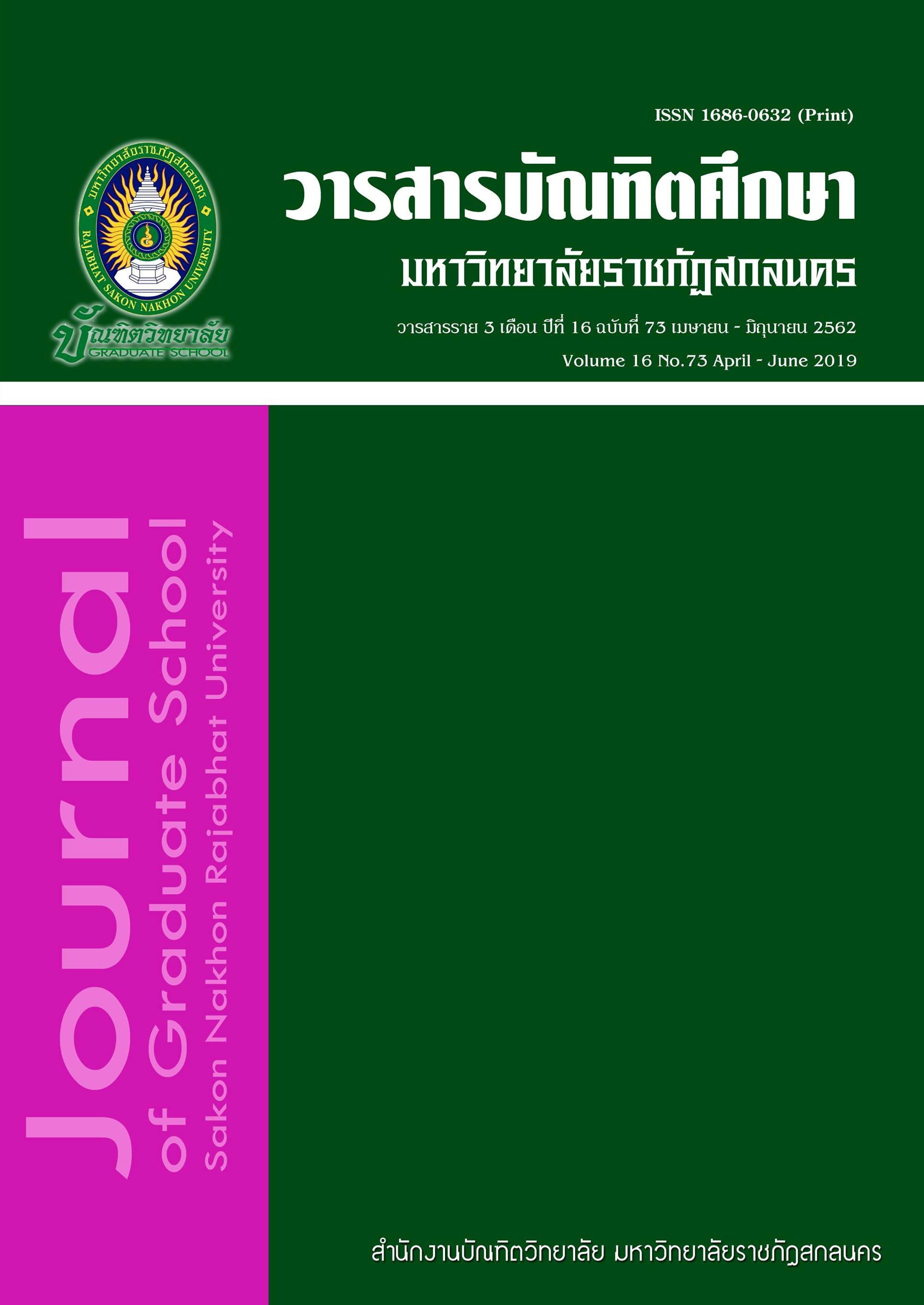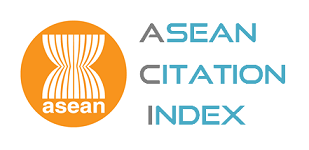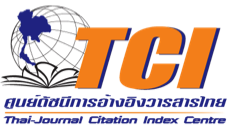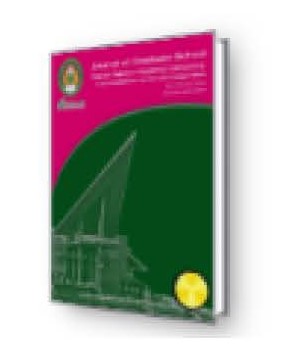รูปแบบการบริหารจัดการมหาวิทยาลัย ตามเกณฑ์คุณภาพการศึกษาเพื่อการดำเนินการที่เป็นเลิศ: กรณีศึกษา มหาวิทยาลัยราชภัฏนครศรีธรรมราช
University administration model/ According to Education Criteria for Performance Excellence
Keywords:
University administration model/ According to Education Criteria for Performance ExcellenceAbstract
The objectives of this research were development university administration model to Education Criteria for Performance Excellence: case studies of Nakhon Si Thammarat Rajabhat University by mixed methods research. The research results were: the administration of intuition/offices according to Education Criteria for Performance Excellence of as a whole was at medium level, the interested for administration according to Education Criteria for Performance Excellence of as a whole was at medium level, the needs to administrational development according to Education Criteria for Performance Excellence as a whole was at high level, the success factors for administration of intuition/offices were 1)Vision of chief, 2) motivation and inspiration to operation of human resource, 3) the capability for building team culture, 4)the strategic focus, and 5)the participative administration. The university administration model according to Education Criteria for Performance Excellence was comprises five parts and ten systems and mechanism. The once part was context: foundation data of organization and Economic and social Changed, the second part was inputs: 1)survey to opinion of stakeholders system and mechanism, 2)needs evaluation of stakeholders system and mechanism, and 3)strategic plan and implementation system and mechanism, the third part was process: 1)the supporting and human resource development system and mechanism, 2) the human resource moral system and mechanism, and the supervision system and mechanism, the fourth part was outputs: 1)the performance evaluation system and mechanism, 2)the measurement, analysis and knowledge management system and mechanism, and 3)the translated and promoted system and mechanism, the fifth part was feedback: benchmark with other intuitions or critical system and mechanism. The overall appropriation and feasibility of intuition/offices under university administration model according to Education Criteria for Performance Excellence as a whole was at high level.
References
บัณฑิต,(ปรด. การบริหารการศึกษาเพื่อพัฒนาท้องถิ่น) มหาวิทยาลัยราชภัฏนครศรีธรรมราช.
เต็มใจ มนต์ไธสงค์. (2559). การปฏิบัติตามเกณฑ์คุณภาพการศึกษาเพื่อการดำเนินการที่เป็นเลิศ. กรุงเทพฯ: มหาวิทยาลัยราชภัฏสวนดุสิต.
ทิศนา แขมมณี. (2551). รูปแบบการสอน. (พิมพครั้งที่ 6). กรุงเทพ ฯ: สำนักพิมพ์แห่งจุฬาลงกรณ์มหาวิทยาลัย
เทื้อน ทองแก้ว. (2549). การบริการเพื่อมุ่งคุณภาพอุดมศึกษาไทยในยุคเศรษฐกิจเสรี. กรุงเทพฯ: มหาวิทยาลัยราชภัฏสวนดุสิต.
บุญชม ศรีสะอาด. (2545). การวิจัยเบื้องต้น. (พิมพ์ครั้งที่ 7). กรุงเทพฯ: สุวีริยาสาสน.
ประดิษฐ์ มีสุข และ ทรงธรรม ธีระกุล, วิกฤติคุณภาพบัณฑิตศึกษากับบทบาทมหาวิทยาลัย, [Online] Available from: www2.tsu.ac.th/.../06042009, เข้าถึงข้อมูลเมื่อ 12 กรกฎาคม 2559.
ปรีดา พ่วงกิ่ม. (2558). รูปแบบการบริหารคุณภาพทั้งองค์การในโรงเรียนประถมศึกษา สังกัดสำนักงานเขตพื้นที่การศึกษาประถมศึกษานครศรีธรรมราช เขต 1. วิทยานิพนธ์ปรัชญาดุษฎีบัณฑิต
(ปรด.การบริหารการศึกษา) มหาวิทยาลัยราชภัฏนครศรีธรรมราช.
มหาวิทยาลัยราชภัฏนครศรีธรรมราช. (2559). แบบรายงานการประเมินตนเองของสถาบัน/สำนัก มหาวิทยาลัยราชภัฏนครศรีธรรมราช. หน่วยงานมาตรฐานและงานประกัน มหาวิทยาลัยราชภัฏ
นครศรีธรรมราช:นครศรีธรรมราช.
มติชนออนไลน์, สมศ. เผยสถาบันอุดมศึกษาไทยมีเพียบ, [Online] Available from: https://www.gotoknow.org/posts/ 285169%5B2552%5D, เข้าถึงข้อมูลเมื่อ 25 พฤษภาคม 2559.
รุ่งชัชดาพร เวหะชาติ. (2548). การพัฒนารูปแบบการบริหารคุณภาพทั้งองค์การของสถานศึกษาขั้นพื้นฐาน. มหาวิทยาลัยทักษิณ.
ศูนย์ข้อมูลสารสนเทศศูนย์ฝึกอบรมตำรวจภูธรภาค, ปัญหาการศึกษาไทย. [Online] Available from: https:// pr.thang@ police.go.th, เข้าถึงเมื่อ 22 กันยายน 2558.
สยาม สุ่มง่าม. (2552). รูปแบบการบริหารสถานศึกษาขั้นพื้นฐานที่เป็นนิติบุคคล สังกัดสำนักงานคณะกรรมการการศึกษาขั้นพื้นฐาน.
กรุงเทพฯ: มหาวิทยาลัยเกษตรศาสตร์
สมกิต บุญยะโพธิ์. (2555). รูปแบบการบริหารสถานศึกษาสังกัดสำนักงานเขตพื้นที่การศึกษาประถมศึกษาสู่ความเป็นเลิศ. วิทยานิพนธ์ปริญญาการศึกษาดุษฎีบัณฑิต
(กศ.ด.การบริหารการศึกษา). มหาวิทยาลัยศิลปากร.
วีระยุทธ ชาตะกาญจน์. (2551). เทคนิคการบริหารสำหรับผู้บริหารการศึกษามืออาชีพ. กรุงเทพฯ:สำนักพิมพ์แห่งจุฬาลงกรณ์มหาวิทยาลัย.
Feng, J., Prajogo, D. I., Tan, K. C., & Sohal, A. S. (2006). “The Impact of TQM Practices on Performance”. European Journal of Innovation Management, 9(3), 269–278.
Krejcie, R.V. & Morgan. D.W. (November 1970) “Determining Sample Size for research Activities” in journal for Education and Psychological Measurement. 30: 607 - 610.
Manjunath, U., Metri, B. A., and Ramachandran, S. (2007). Quality Management in Health Care Organization: A Case of South Indian Hospital, The TQM magazine,
(2), 129-139.
Office of the Higher Education Commission. (2011). Education Criteria for Performance Excellence (EdPEx) 2011 – 2012. Bangkok: Office of the Higher Education
Commission.
Rad, A. M. (2006). “The Impact of Organizational Culture on the Successful implementation of Total Quality
Management”. The TQM Magazine, 18(6), 606- 625
Shipengrover, J. A. (1994). “The Relationship of the Total Quality Management to the Implementation of the School Improvement Process in a New York State Excelsior
Award-Winning School District”. Dissertation of Ph.D. degree. State University of New York at Buffalo.
Winn B. A. & Cameron, K. S. (1998). “Organizational Quality: An Examination of the Malcolm Baldrige National Quality Framework”. Research in Higher Education,
39(5), 491-512.
Willer, D. (1986). Scientific Sociology: Theory and Method. Englewood Clift. New Jersey: Prentice Hall Inc.
Downloads
Published
How to Cite
Issue
Section
License
บทความทุกบทความที่ตีพิมพ์ในวารสารบัณฑิตศึกษา มหาวิทยาลัยราชภัฏสกลนคร ถือว่าเป็นลิขสิทธิ์ของบัณฑิตวิทยาลัย มหาวิทยาลัยราชภัฏสกลนคร










